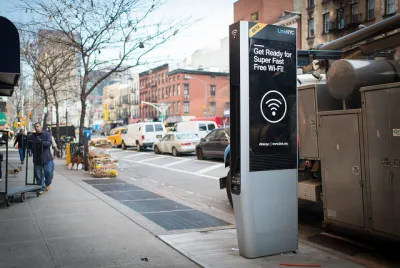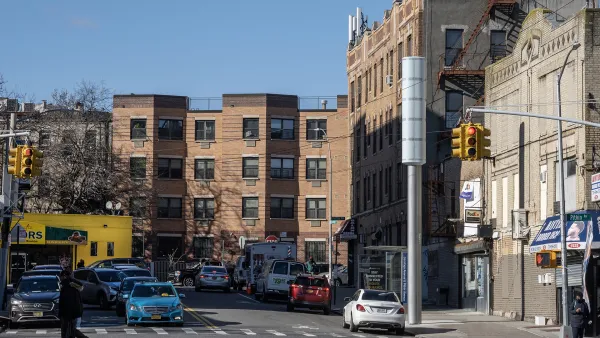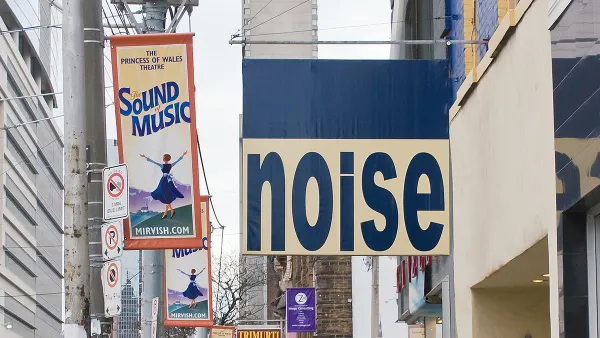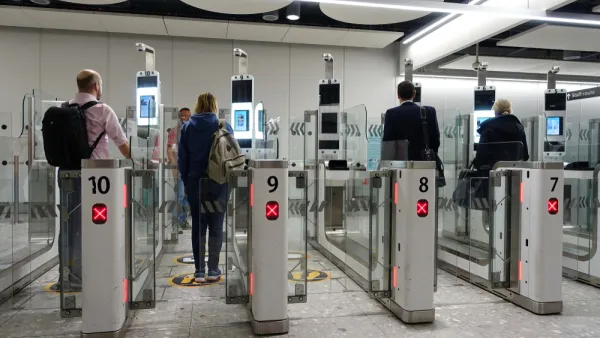The big city isn't such an anonymous place anymore.

Ben Green, author of The Smart Enough City: Putting Technology in Its Place to Reclaim Our Urban Future, writes to explain the many ways "smart city" technology is a torjan horse for new kinds of corporate surveillance.
The first example Green cites on this theme are the 1,700 LinkNYC kiosks installed around the city, providing provide public Wi-Fi, free domestic phone calls, and USB charging ports.
Yet the LinkNYC kiosks are not just a useful public service. They are owned and operated by CityBridge (a consortium of companies that includes investment and leadership from Sidewalk Labs — a subsidiary of Alphabet, the parent company of Google) and are outfitted with sensors and cameras that track the movements of everyone in their vicinity. Once you connect, the network will record your location every time you come within 150 feet of a kiosk.
So, according to Green, smart city technology is just as much, if not more, about expanding the collection of personal data by government and corporations than improving the experience of the city or delivering services that make the daily lives of citizens easier or more prosperous.
If the implications of these smart city technologies are understood correctly the social contract of the future includes smart city technologies functioning as "covert tools for increasing surveillance, corporate profits and, at worst, social control."
Green has prescriptions for these dystopian outcomes that don't involve an anti-technology movement or a return to the Bronze Age. Green cites the Array of Things project in Chicago as an example of the democratic deliberation that can serve as an antidote to corporate surveillance.
FULL STORY: Smile, Your City Is Watching You

Analysis: Cybertruck Fatality Rate Far Exceeds That of Ford Pinto
The Tesla Cybertruck was recalled seven times last year.

National Parks Layoffs Will Cause Communities to Lose Billions
Thousands of essential park workers were laid off this week, just before the busy spring break season.

Retro-silient?: America’s First “Eco-burb,” The Woodlands Turns 50
A master-planned community north of Houston offers lessons on green infrastructure and resilient design, but falls short of its founder’s lofty affordability and walkability goals.

Test News Post 1
This is a summary

Analysis: Cybertruck Fatality Rate Far Exceeds That of Ford Pinto
The Tesla Cybertruck was recalled seven times last year.

Test News Headline 46
Test for the image on the front page.
Urban Design for Planners 1: Software Tools
This six-course series explores essential urban design concepts using open source software and equips planners with the tools they need to participate fully in the urban design process.
Planning for Universal Design
Learn the tools for implementing Universal Design in planning regulations.
EMC Planning Group, Inc.
Planetizen
Planetizen
Mpact (formerly Rail~Volution)
Great Falls Development Authority, Inc.
HUDs Office of Policy Development and Research
NYU Wagner Graduate School of Public Service




























